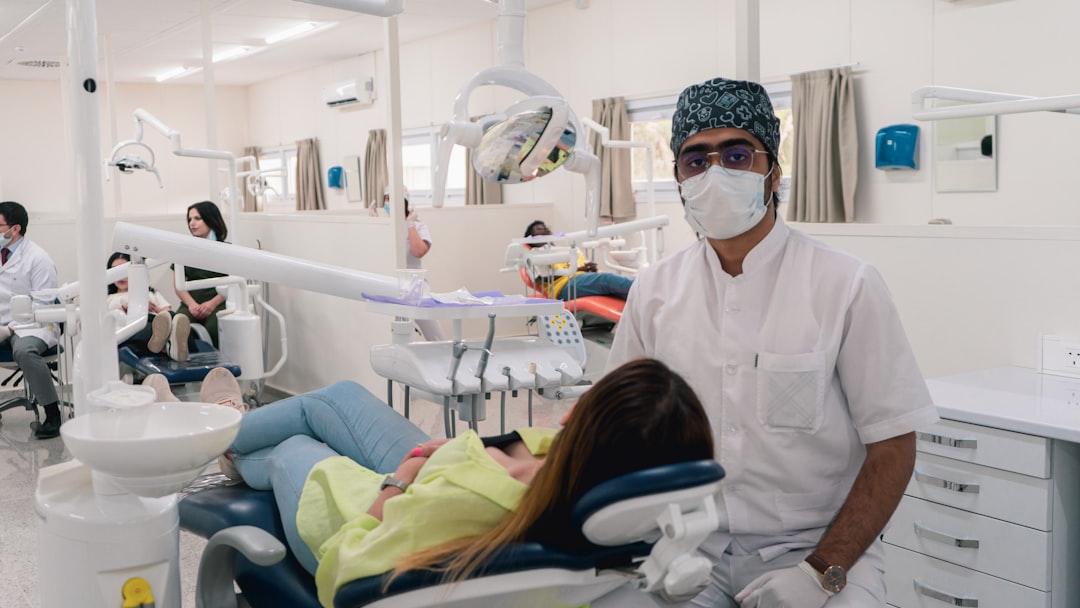Norway’s winter climate is a captivating blend of beauty and challenge, characterised by its long, dark nights and stunning snowy landscapes. From late November to early March, the country experiences a significant drop in temperatures, often plunging well below freezing, particularly in the northern regions. The coastal areas, influenced by the Gulf Stream, tend to have milder winters compared to the inland areas, where the cold can be more severe.
Snowfall is common, transforming the landscape into a winter wonderland, but it also brings with it a host of challenges that residents and visitors must navigate. The unique geographical features of Norway contribute to its winter climate. The fjords and mountains create microclimates, leading to variations in weather even within short distances.
In the north, the phenomenon of polar nights occurs, where the sun does not rise above the horizon for several weeks. This can be both enchanting and disorienting for those unaccustomed to such conditions. Understanding these climatic nuances is essential for anyone planning to spend time in Norway during the winter months, as it influences everything from daily activities to travel plans. Book your 1-hour strategy session with Norway Relocation Group.
Summary
- Norway’s winter climate can be extremely cold and snowy, with temperatures dropping well below freezing.
- Essential winter clothing in Norway includes thermal layers, waterproof outerwear, insulated boots, and accessories like hats and gloves.
- When navigating icy and snowy conditions, it’s important to walk carefully, wear appropriate footwear, and drive cautiously with winter tyres and chains if necessary.
- Preparing your home for winter in Norway involves ensuring proper heating, insulation, and weatherproofing to stay warm and reduce energy costs.
- Staying healthy in the winter in Norway means getting enough vitamin D, staying active, and practicing good hygiene to avoid seasonal illnesses.
Dressing for the Cold: Essential Winter Clothing
When it comes to braving the Norwegian winter, appropriate clothing is paramount. Layering is the key to staying warm and comfortable in fluctuating temperatures. The base layer should consist of moisture-wicking materials that keep sweat away from the skin, followed by an insulating layer such as fleece or wool that traps heat.
Finally, an outer layer made of waterproof and windproof fabric is essential to protect against the elements. This three-layer system allows for flexibility and adaptability, ensuring that one can adjust to changing conditions throughout the day. Accessories play a crucial role in winter attire as well.
A good-quality hat is vital for retaining body heat, as a significant amount of warmth escapes through the head. Scarves and neck gaiters provide additional protection against biting winds, while insulated gloves or mittens keep hands warm and functional. Footwear should not be overlooked; insulated and waterproof boots with good traction are necessary for navigating snowy and icy terrain.
By investing in quality winter clothing and understanding how to layer effectively, individuals can enjoy outdoor activities without succumbing to the cold.
Navigating Icy and Snowy Conditions: Tips for Safe Walking and Driving

As picturesque as Norway’s winter landscape may be, it poses significant challenges for both pedestrians and drivers. Walking on icy sidewalks can be treacherous; therefore, it is advisable to wear shoes with good grip or even specialised ice cleats that provide extra traction. When walking on snow-covered paths, taking smaller steps can help maintain balance and prevent slips.
It is also wise to keep hands out of pockets to ensure better balance and to be aware of one’s surroundings, particularly when navigating crowded areas or public transport. Driving in winter conditions requires heightened caution and preparation. Before setting out, it is essential to check weather forecasts and road conditions.
Vehicles should be equipped with winter tyres that provide better grip on snow and ice. Additionally, keeping an emergency kit in the car—complete with blankets, food, water, and a first-aid kit—can be invaluable in case of unexpected breakdowns or accidents. Drivers should also allow extra time for journeys, as roads may be slower than usual due to snow removal efforts or hazardous conditions.
Preparing Your Home for Winter: Heating and Insulation
As temperatures plummet outside, ensuring that your home remains warm and comfortable becomes a priority. Proper insulation is crucial in maintaining heat within the home and reducing energy costs. This includes checking windows and doors for drafts and sealing any gaps with weather stripping or caulking.
Insulating attics and basements can also significantly improve heat retention. In addition to insulation, investing in energy-efficient heating systems can make a substantial difference in comfort levels during the harsh winter months. Regular maintenance of heating systems is equally important.
Homeowners should schedule annual inspections for their boilers or furnaces to ensure they are functioning efficiently and safely. It is also wise to have carbon monoxide detectors installed throughout the home, particularly near sleeping areas, as this silent killer can pose a serious risk during winter when heating systems are in use more frequently. By taking these proactive measures, individuals can create a warm sanctuary amidst Norway’s frosty climate.
Avoiding Seasonal Ailments: Tips for Staying Healthy in the Winter
Winter often brings with it an increase in seasonal ailments such as colds and flu, making it essential to take preventive measures to stay healthy. One of the most effective ways to bolster immunity is through proper nutrition; consuming a balanced diet rich in vitamins and minerals can help fend off illness. Foods high in vitamin C, such as citrus fruits and leafy greens, are particularly beneficial during this time of year.
Staying hydrated is equally important; despite the cold weather, our bodies still require adequate water intake. In addition to nutrition, maintaining an active lifestyle can help keep seasonal illnesses at bay. Engaging in regular physical activity boosts immunity and improves overall wellbeing.
However, it is crucial to adapt exercise routines to suit winter conditions; indoor workouts or winter sports like skiing can provide both fitness benefits and enjoyment. Furthermore, ensuring adequate sleep is vital for recovery and maintaining a strong immune system during the colder months.
Safety Tips for Outdoor Activities in the Snow

Engaging in outdoor activities during Norway’s winter months can be exhilarating but requires careful consideration of safety measures. Whether skiing, snowshoeing, or simply enjoying a walk in the snow, being prepared is essential. Always inform someone of your plans before heading out into remote areas; this ensures that someone knows your whereabouts in case of an emergency.
Additionally, carrying a fully charged mobile phone can be a lifesaver if you find yourself in need of assistance. When participating in winter sports or activities, wearing appropriate safety gear is non-negotiable. Helmets are essential for skiing or snowboarding to protect against head injuries, while reflective clothing can enhance visibility during low-light conditions.
It is also wise to check weather forecasts before embarking on outdoor adventures; sudden changes in weather can lead to dangerous conditions such as blizzards or whiteouts. By prioritising safety measures, individuals can enjoy all that Norway’s winter has to offer while minimising risks.
Understanding the Dangers of Frostbite and Hypothermia
Frostbite and hypothermia are serious conditions that can occur when exposed to extreme cold for prolonged periods. Frostbite typically affects extremities such as fingers, toes, ears, and noses; symptoms include numbness, tingling sensations, and discolouration of the skin. If frostbite is suspected, it is crucial to seek medical attention immediately while gently warming the affected area—never rub frostbitten skin as this can cause further damage.
Hypothermia occurs when body temperature drops below 35 degrees Celsius (95 degrees Fahrenheit) due to prolonged exposure to cold environments. Symptoms include shivering, confusion, slurred speech, and fatigue. If someone shows signs of hypothermia, it is vital to move them indoors or into a sheltered area immediately and provide warm blankets or clothing while seeking medical help.
Understanding these dangers is essential for anyone spending time outdoors during Norway’s frigid winters.
Winter Sports Safety: Tips for Skiing, Snowboarding, and Ice Skating
Winter sports are a beloved pastime in Norway, but they come with inherent risks that necessitate safety precautions. For skiing and snowboarding enthusiasts, it is crucial to choose slopes that match your skill level; attempting advanced runs without adequate experience can lead to accidents or injuries. Additionally, always adhere to posted signs and guidelines on ski resorts; these are designed to ensure safety for all users.
Ice skating is another popular winter activity that requires attention to safety measures. Before stepping onto frozen lakes or ponds, it is vital to check ice thickness—at least 10 cm (4 inches) of clear ice is generally considered safe for skating. Wearing protective gear such as helmets and pads can help prevent injuries from falls or collisions.
By following these safety tips, individuals can enjoy winter sports while minimising risks associated with these exhilarating activities.
Fire Safety in the Winter: Preventing Accidents and Carbon Monoxide Poisoning
As temperatures drop outside, many households rely on heating systems that pose potential fire hazards if not properly maintained. Regularly checking smoke detectors and replacing batteries ensures early detection of fires should they occur. Additionally, keeping flammable materials away from heat sources such as radiators or fireplaces is essential for preventing accidental fires.
Carbon monoxide poisoning is another risk associated with winter heating systems; this odourless gas can accumulate if appliances are not functioning correctly. Installing carbon monoxide detectors throughout the home provides an added layer of safety against this silent threat. Homeowners should also ensure proper ventilation when using gas-powered heaters or fireplaces to prevent carbon monoxide buildup indoors.
Mental Health and Wellbeing in the Winter Months
The long winter months can take a toll on mental health for many individuals due to reduced sunlight exposure and isolation from social activities. Seasonal Affective Disorder (SAD) is a common condition that affects people during this time of year; symptoms include feelings of sadness, lethargy, and difficulty concentrating. To combat these feelings, it is essential to maintain social connections by reaching out to friends or family regularly.
Engaging in outdoor activities—even when it’s cold—can also help improve mood by increasing exposure to natural light and promoting physical activity. Additionally, incorporating mindfulness practices such as meditation or yoga into daily routines can enhance overall wellbeing during challenging months. By prioritising mental health strategies during wintertime, individuals can navigate this season with greater resilience.
Emergency Preparedness: Knowing What to Do in a Winter Crisis
Being prepared for emergencies during winter months is crucial for ensuring safety and wellbeing when faced with unexpected situations such as severe storms or power outages. Creating an emergency kit stocked with essentials like food supplies, water, flashlights, batteries, first-aid items, and blankets can make all the difference during a crisis. It’s also important to have a plan in place for communication with family members or friends should an emergency arise; knowing how to reach each other during adverse weather conditions ensures everyone stays informed about each other’s safety status.
Familiarising oneself with local emergency services numbers can expedite assistance if needed during critical situations. In conclusion, while Norway’s winter climate presents unique challenges—from frigid temperatures to icy conditions—being well-prepared allows individuals to embrace this beautiful season fully. By understanding how best to dress for the cold, navigate snowy landscapes safely, maintain health during winter months, engage responsibly in outdoor activities like skiing or ice skating while prioritising fire safety at home—everyone can enjoy all that Norway has to offer during its enchanting winters.
For those looking to immerse themselves further into Norwegian culture while navigating these wintry conditions effectively—consider enrolling in Norwegian courses at NLS Norwegian Language School! These courses not only provide language skills but also cultural insights that enhance your experience living or visiting Norway during its stunning yet challenging winters!
Speak Norwegian with confidence. Enroll in a class at the NLS Norwegian Language School now.

